“Hey, did you check Paytm stock today?”
“Yeah, it crashed almost 10%! What’s going on?”
“Well, something about the new UPI rules and some government update…”
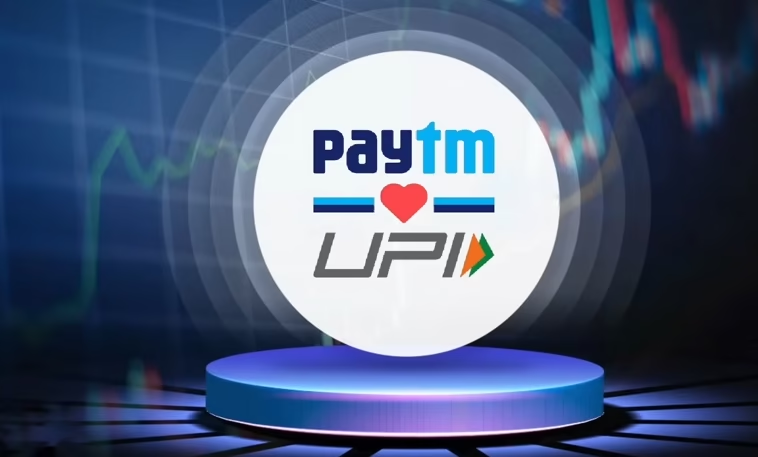
This is how most retail investors and digital payment users began their morning—confused, surprised, and searching for answers.
The phrase “Paytm stock update after UPI new rules” has suddenly taken over headlines, forums, and newsfeeds. Why did Paytm’s stock tank? What are these new UPI rules? Are we going to start paying for UPI transactions now?
In this article, we’ll decode everything you need to know in simple language with examples, data, and real implications for users, merchants, and investors.
📌 What You’ll Learn in This Article:
- What exactly are the new UPI rules?
- Why did Paytm stock fall after these updates?
- What is MDR and why it matters for fintech?
- How does this impact UPI users like you and me?
- What does this mean for Paytm and Mobikwik going forward?
Table of Contents
🏦 What Are the UPI New Rules in 2025?
To understand the Paytm stock update after UPI new rules, we first need to look at what the government was planning.
➤ UPI Basics (for beginners)
UPI, or Unified Payments Interface, allows you to send and receive money instantly without any charges. It’s used by almost every Indian today—at kirana stores, online shopping, Zomato, everywhere!
Currently:
- No charges are applied to either the sender or receiver.
- It’s completely free.
But here’s the twist:
There were rumors that the government might introduce MDR (Merchant Discount Rate)—a small fee charged on transactions—from the seller’s side.
That means, when you pay ₹500 for a t-shirt using UPI, the merchant (seller) might have to pay a small fee (say, ₹5 or ₹10) to the payment gateway or banks involved.
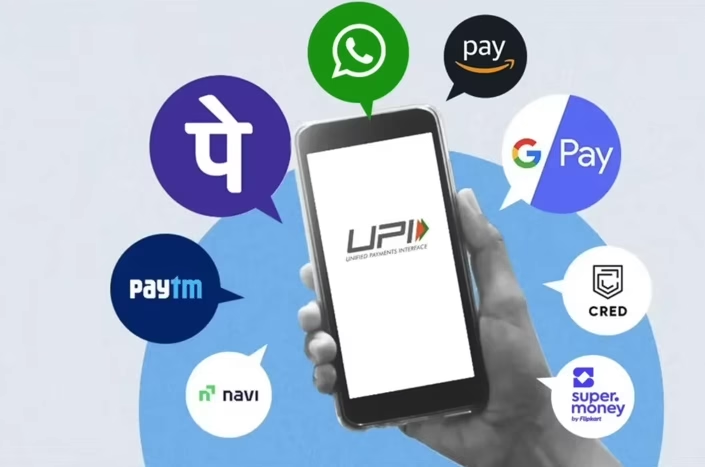
📉 So Why Did Paytm Stock Fall?
Here’s where the story gets interesting.
Investors assumed that Paytm and other fintech platforms would earn extra revenue if the government allowed MDR. Why? Because they’d get a slice of those fees.
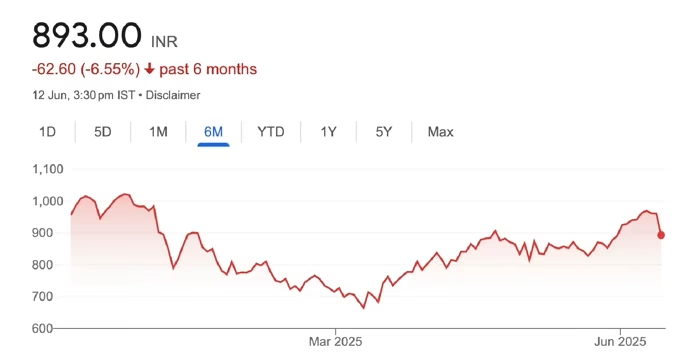
Analysts projected that if MDR was allowed:
- Paytm’s operating profit would improve by 10% in FY26 and FY27.
- More commission-based income = better stock performance.
- Fintech companies would finally become more sustainable.
But then came the shock:
The central government clarified they have no intention of charging MDR on UPI or RuPay card transactions.
And just like that, the entire hope of additional profit vanished.
📉 Paytm Stock Performance (June 2025)
| Date | Stock Price (₹) | Change | Reason |
|---|---|---|---|
| June 5, 2025 | ₹580 | – | Normal trading |
| June 7, 2025 | ₹638 | +10% | Rumors of MDR-based income |
| June 10, 2025 | ₹575 | –10% | Govt denied MDR charges on UPI |
As seen above, Paytm stock jumped on hope—and crashed when reality struck.
💡 What Is MDR and Why Is It Important?
Let’s break this down simply.
✅ MDR = Merchant Discount Rate
It’s a small fee paid by the seller (merchant) to the payment processor (like Paytm, PhonePe) for enabling digital payments.
| Payment Type | MDR Charged? |
|---|---|
| Credit Cards | ✅ Yes (1–2%) |
| Debit Cards | ✅ Yes (0.5–1%) |
| UPI Transactions | ❌ No |
If MDR were added to UPI, companies like Paytm could earn revenue per transaction—finally making digital transactions more profitable.
But since the government said NO to MDR, payment apps continue to run without direct earnings from UPI.
🤯 Why Did the Market React So Sharply?
Markets are driven by expectations, not just facts.

When the MDR rumor surfaced, investors expected:
- Paytm would make more money
- Margins would expand
- The company would turn profitable faster
But when the government clarified that UPI will stay free, these expectations crashed.
That’s why the Paytm stock update after UPI new rules turned negative. Instead of hope, it brought in disappointment for investors.
👥 What Does This Mean for UPI Users?
Here’s the good news:

- UPI stays 100% free. No extra charges for users.
- Whether you pay for milk or an iPhone, you won’t pay MDR.
- Merchants won’t pass on any charge to you, because they won’t be charged either.
But here’s the hidden risk 👇
Some merchants might start saying:
“Sorry sir, UPI not working. Please pay cash or card.”
Why? Because they don’t earn anything from UPI and can’t afford even the smallest backend charges (if any are added later).
This is where the government needs to handle carefully, ensuring UPI remains both free and sustainable.
💸 Impact on Paytm, Mobikwik, and Other Fintechs
Fintechs like Paytm, PhonePe, and Mobikwik depend heavily on UPI traffic for user engagement. But since UPI doesn’t earn them direct revenue, they’re under pressure.
Let’s compare:
| Company | UPI Users | MDR Income Potential | Current UPI Revenue |
|---|---|---|---|
| Paytm | 10 crore+ | High (if MDR applied) | Very Low |
| Mobikwik | 3 crore+ | Medium | Very Low |
| PhonePe | 12 crore+ | High | Very Low |
With MDR being ruled out:
- All of them lost future income expectations
- Investors are now questioning: how will these companies become profitable?
This is why the Paytm stock update after UPI new rules is more than just a price drop — it’s a business model challenge.
🔄 Transitioning to a Sustainable Model – What’s Next?
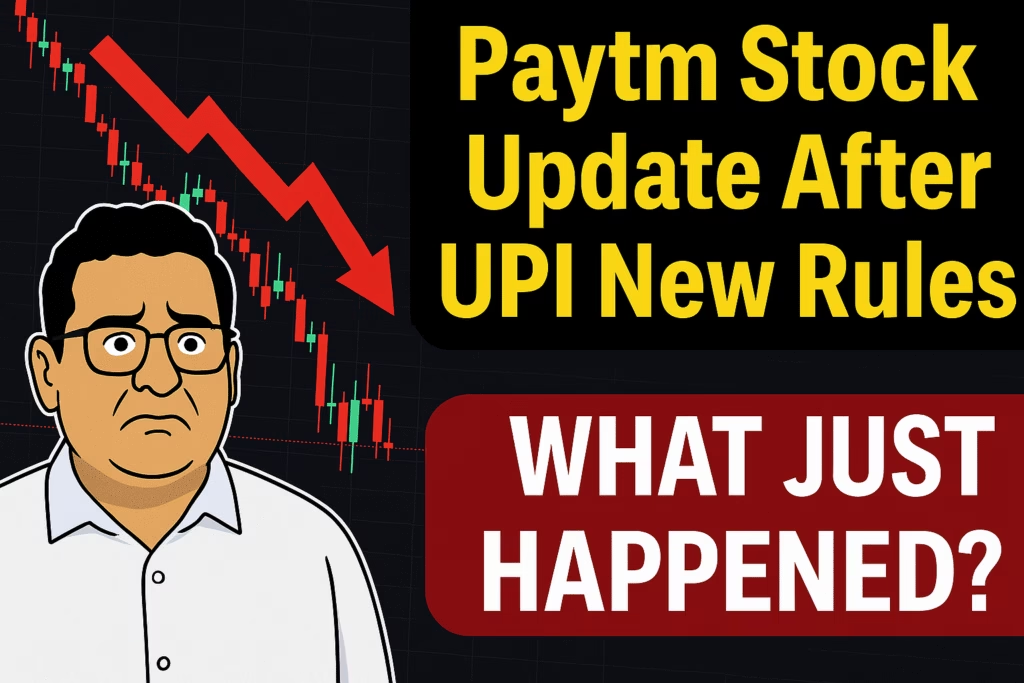
Since the government insists on keeping UPI free, fintechs must:
- Explore alternate revenue sources
- Credit products
- Lending partnerships
- Insurance
- Wealth management
- Cut operational costs
- Improve backend infrastructure
- Avoid reliance on MDR expectations
- Retain users through rewards
- Cashback, loyalty points, smart bill payments
Government, meanwhile, may consider indirect support models, like:
- Paying incentives for verified transactions
- Offering infrastructure subsidies
📊 Chart: UPI Transaction Growth vs Revenue for Paytm
| Year | UPI Volume (₹ Cr) | Revenue from UPI (₹ Cr) | Revenue % of Total |
|---|---|---|---|
| 2022 | 5,00,000 | 20 | 2% |
| 2023 | 8,50,000 | 35 | 3% |
| 2024 | 13,00,000 | 60 | 4% |
| 2025 | 17,00,000 (est.) | 65–70 (flat) | 4% |
Even though UPI usage exploded, actual revenue remained flat, proving that without MDR or government support, scaling doesn’t mean profit.
✅ Conclusion: What We Learned from the Paytm Stock Update After UPI New Rules
The recent Paytm stock update after UPI new rules reminds us that market hype can be short-lived.
Here’s a recap:
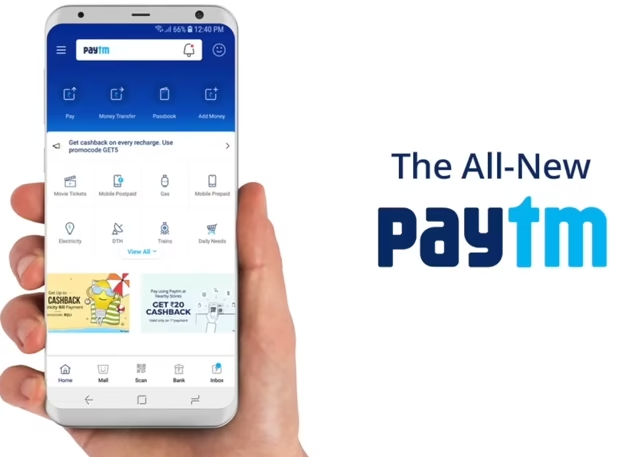
- UPI remains free—good for users, bad for fintech revenues.
- Paytm stock fell ~10% after the government clarified no MDR plans.
- Investors must focus on sustainable models, not rumors.
- Fintech players need to diversify income beyond UPI.
- Government must find a balance to keep digital payments growing without hurting the fintech ecosystem.
❓ FAQs – Paytm Stock & UPI Rules Explained
1. Why did Paytm stock fall in June 2025?
Because the government clarified that it won’t introduce MDR on UPI transactions. Investors had expected extra income for fintechs, which got erased.
2. Will I be charged for using UPI now?
No. UPI remains 100% free for users. No MDR or transaction charges will apply.
3. What is MDR in UPI?
MDR stands for Merchant Discount Rate—a small fee charged to sellers for each digital payment. Currently, UPI has no MDR.
4. Is Paytm still a good stock to invest in?
That depends on your risk appetite. The company still has a large user base but faces pressure to generate revenue without MDR. Do thorough research.
5. Will merchants stop accepting UPI?
Some may discourage it if backend costs rise, but the government is likely to intervene if this becomes a large issue.
📢 For More Articles Like This:
👉 Click here to explore all articles on FinanceWithXpert
📲 Join our finance community:
🔵 Telegram Group
🟦 Facebook Group
🐦 Twitter Updates
💼 LinkedIn Post
💬 WhatsApp Broadcast
COMMENTS